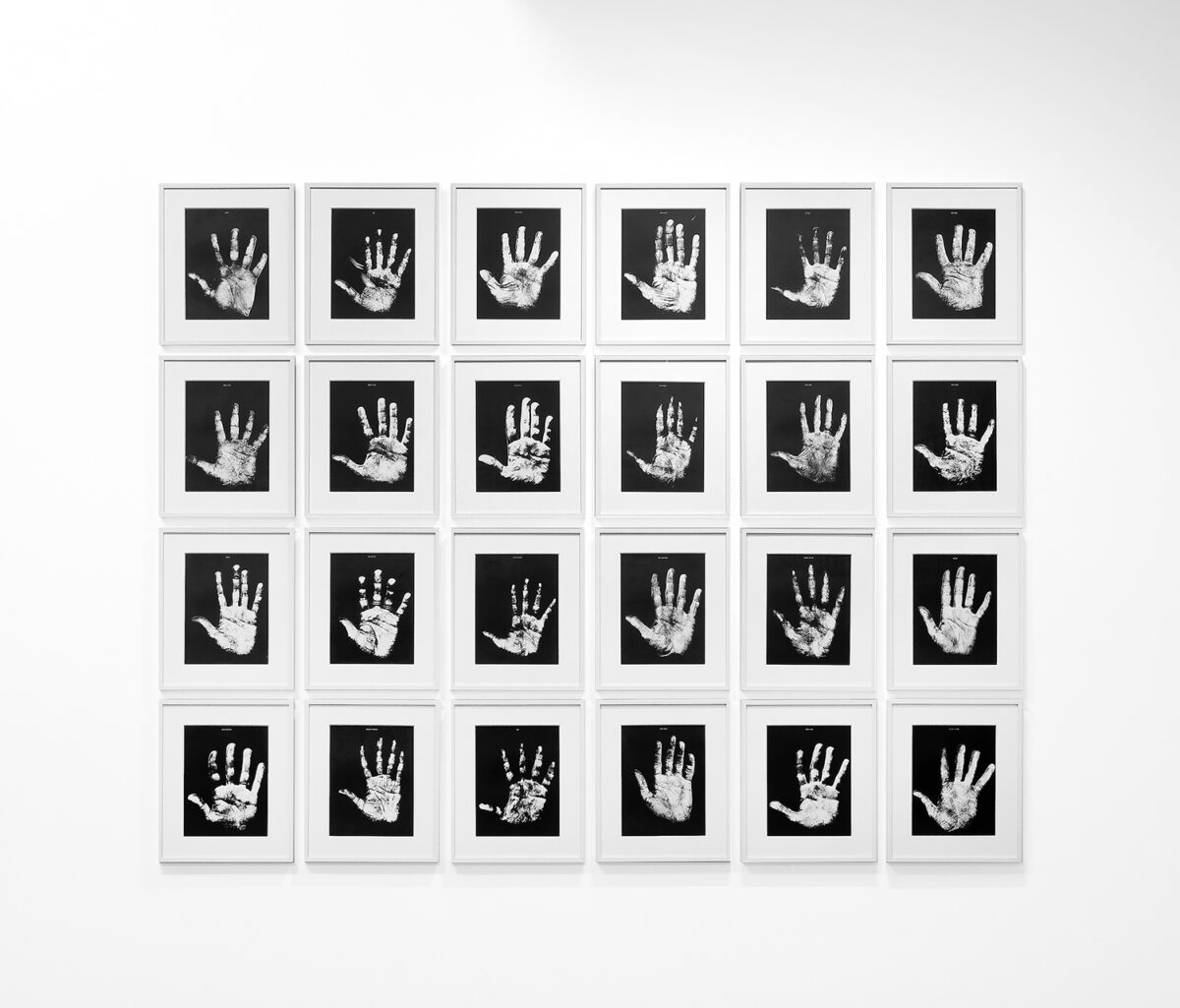
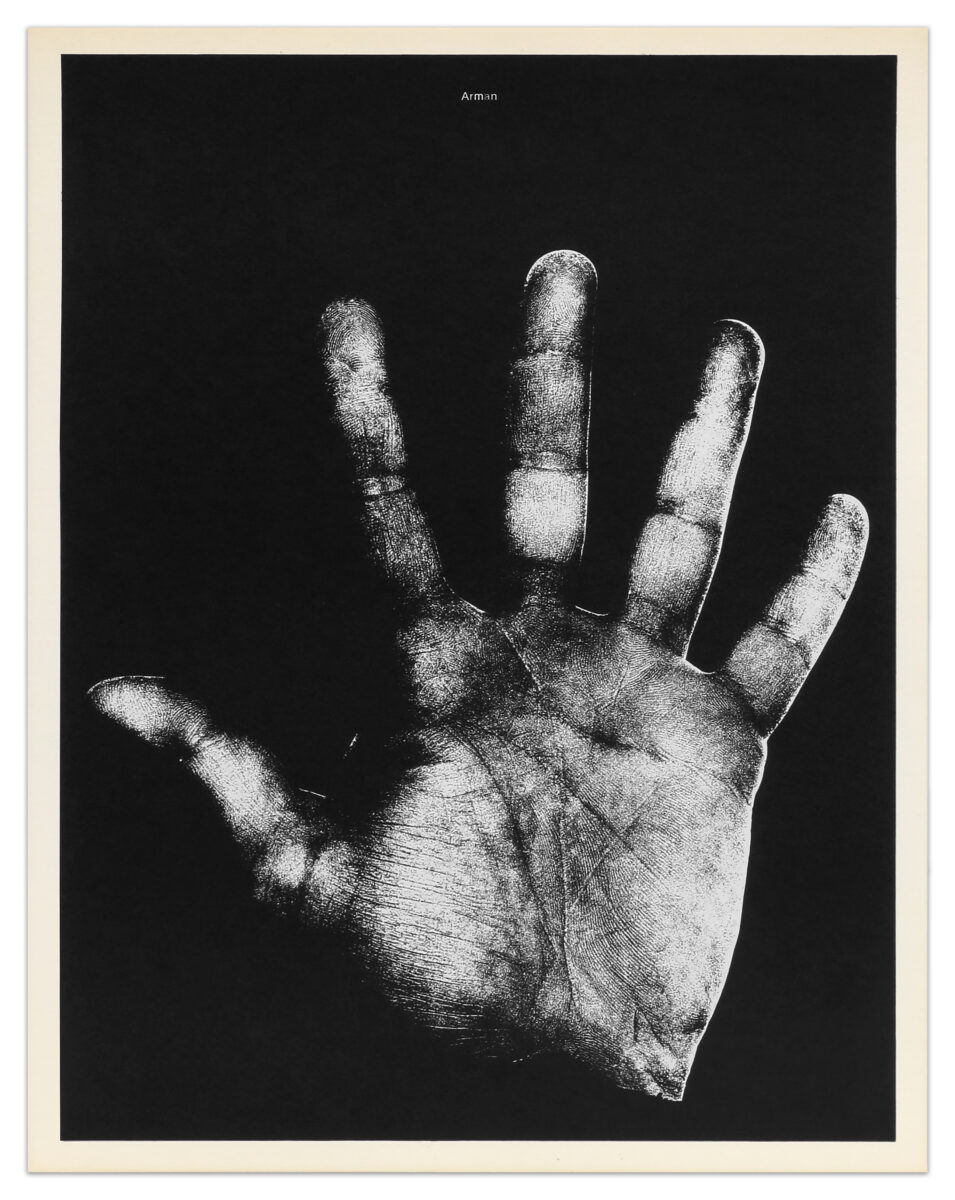
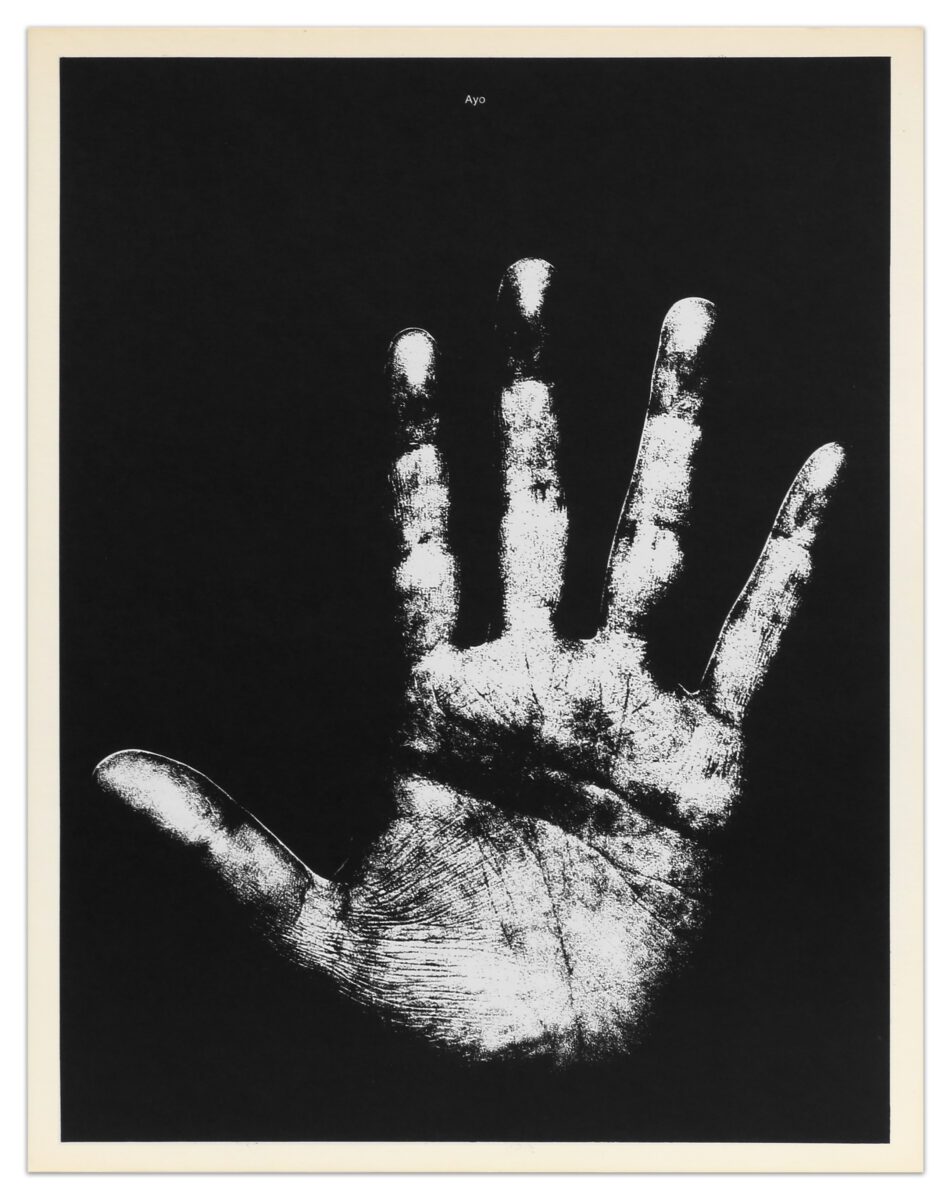
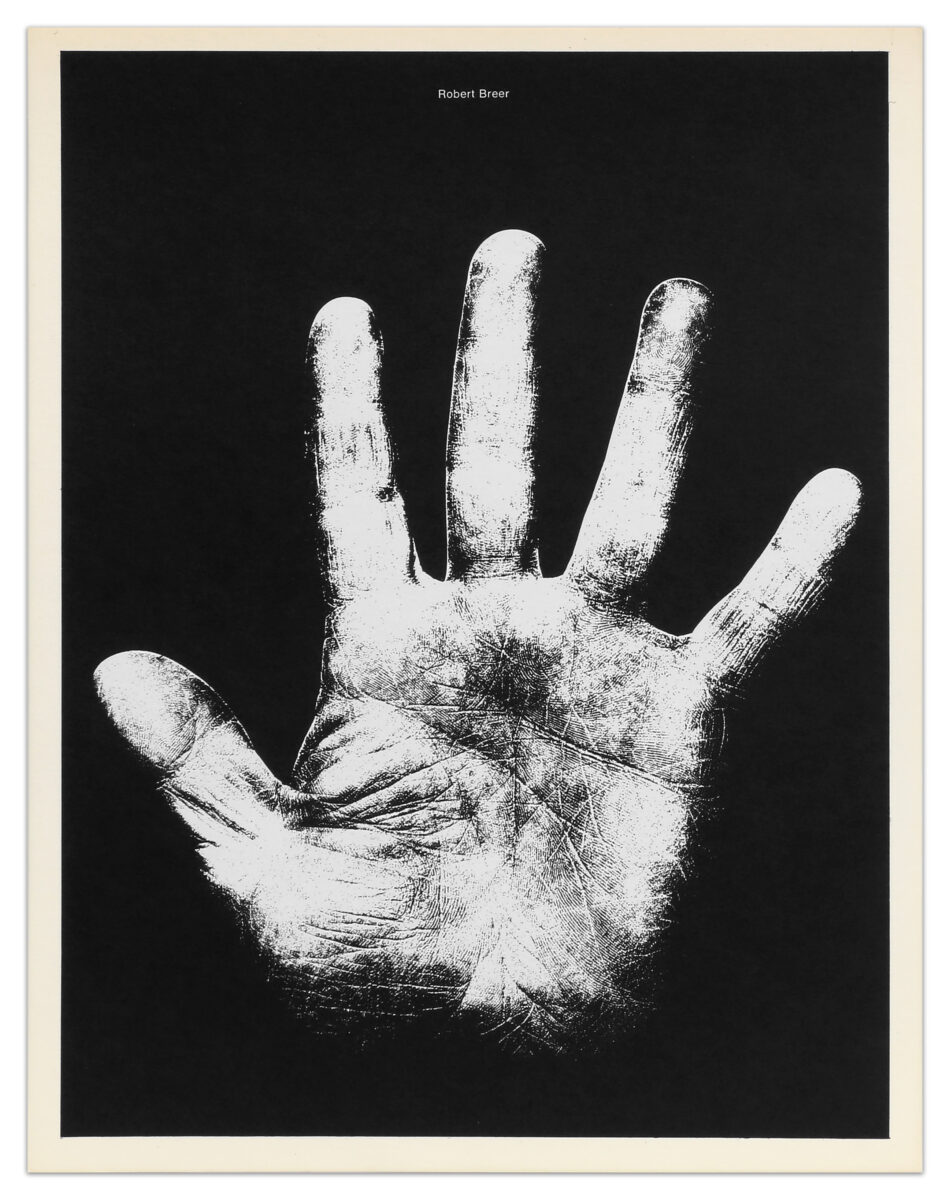
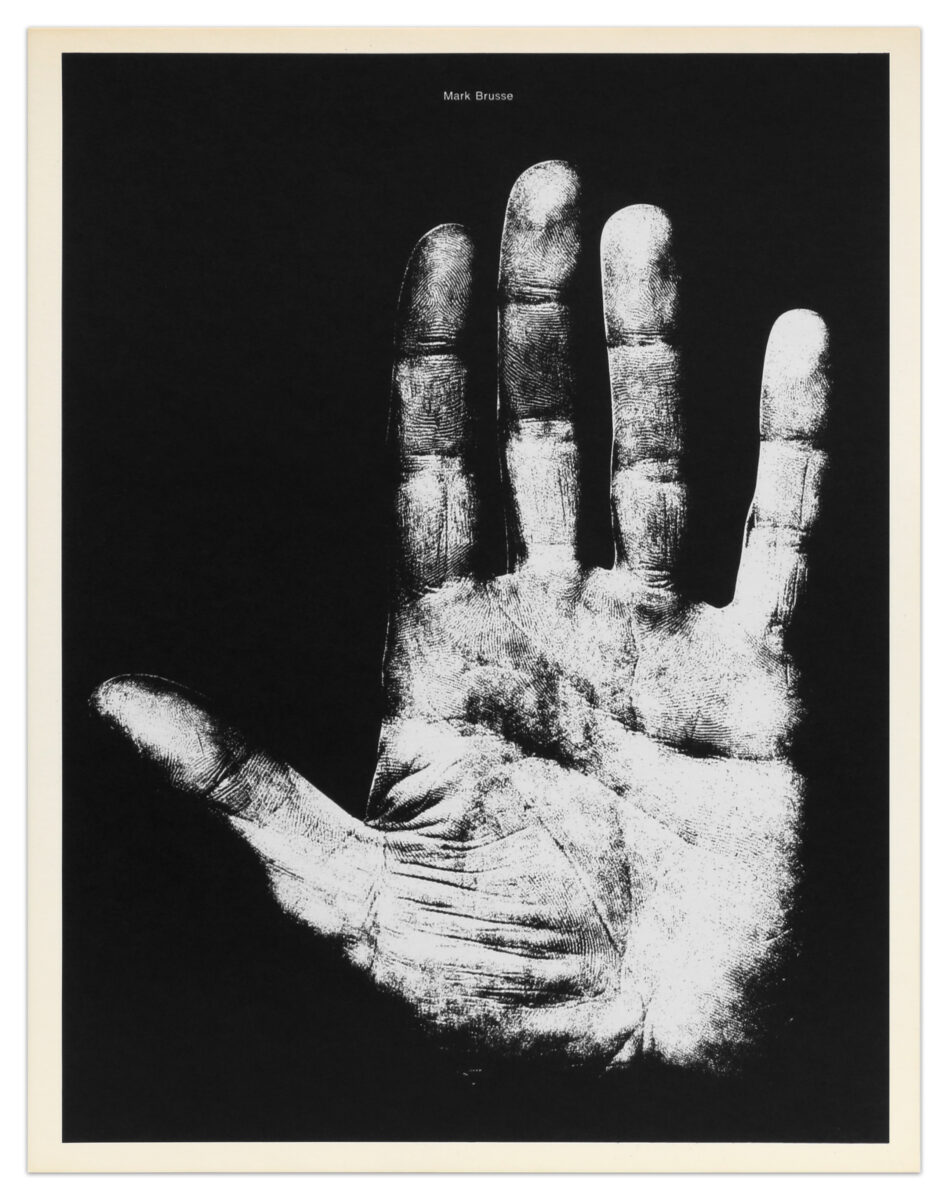
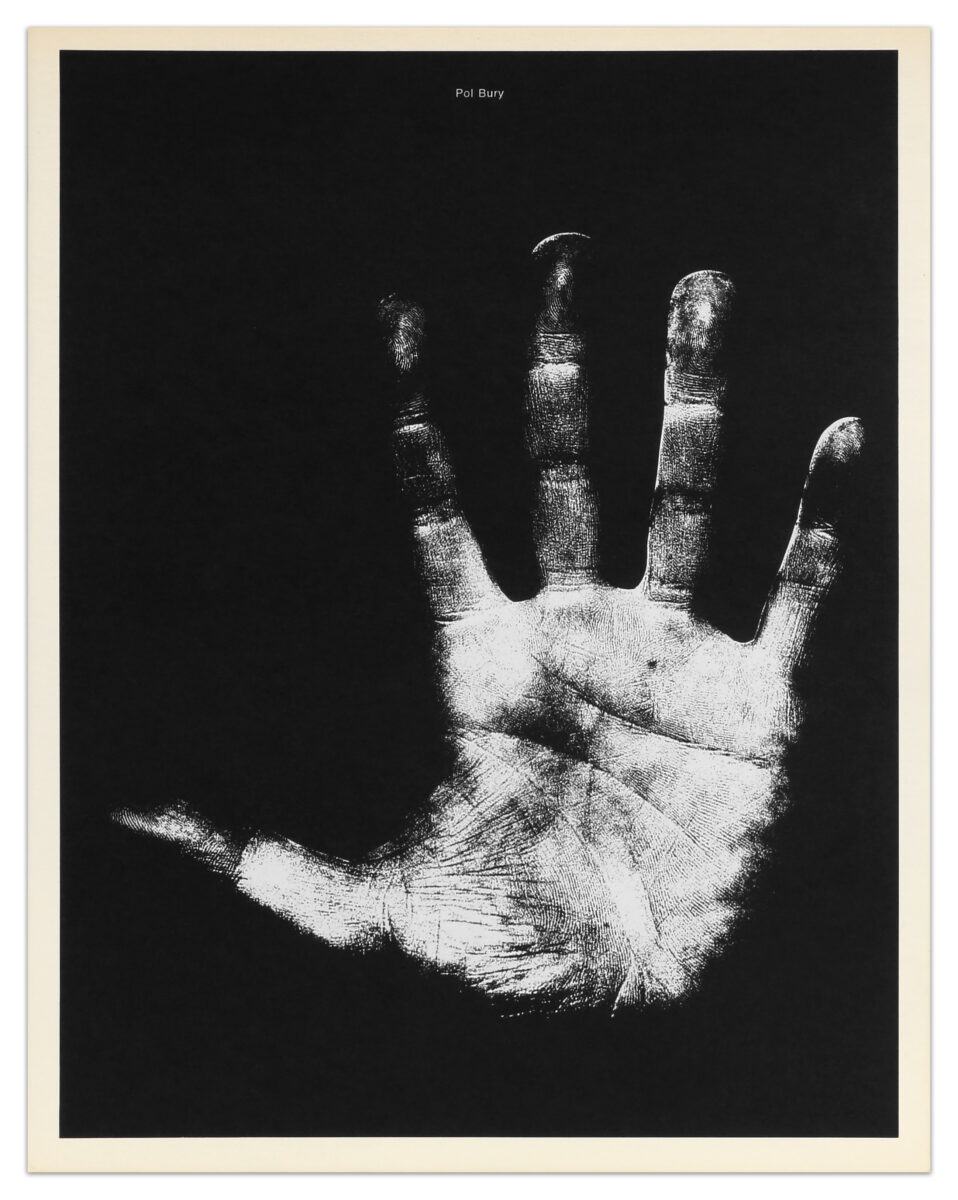
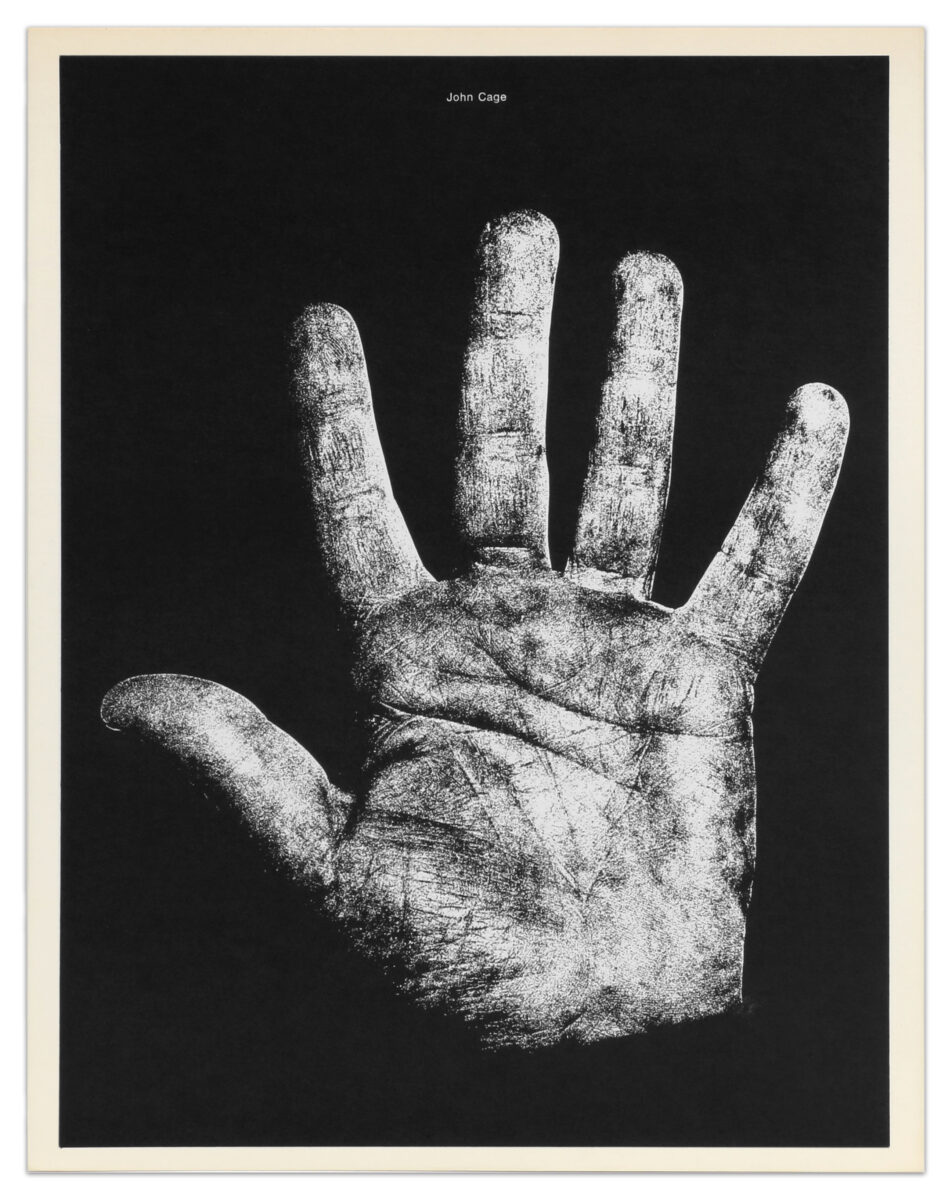
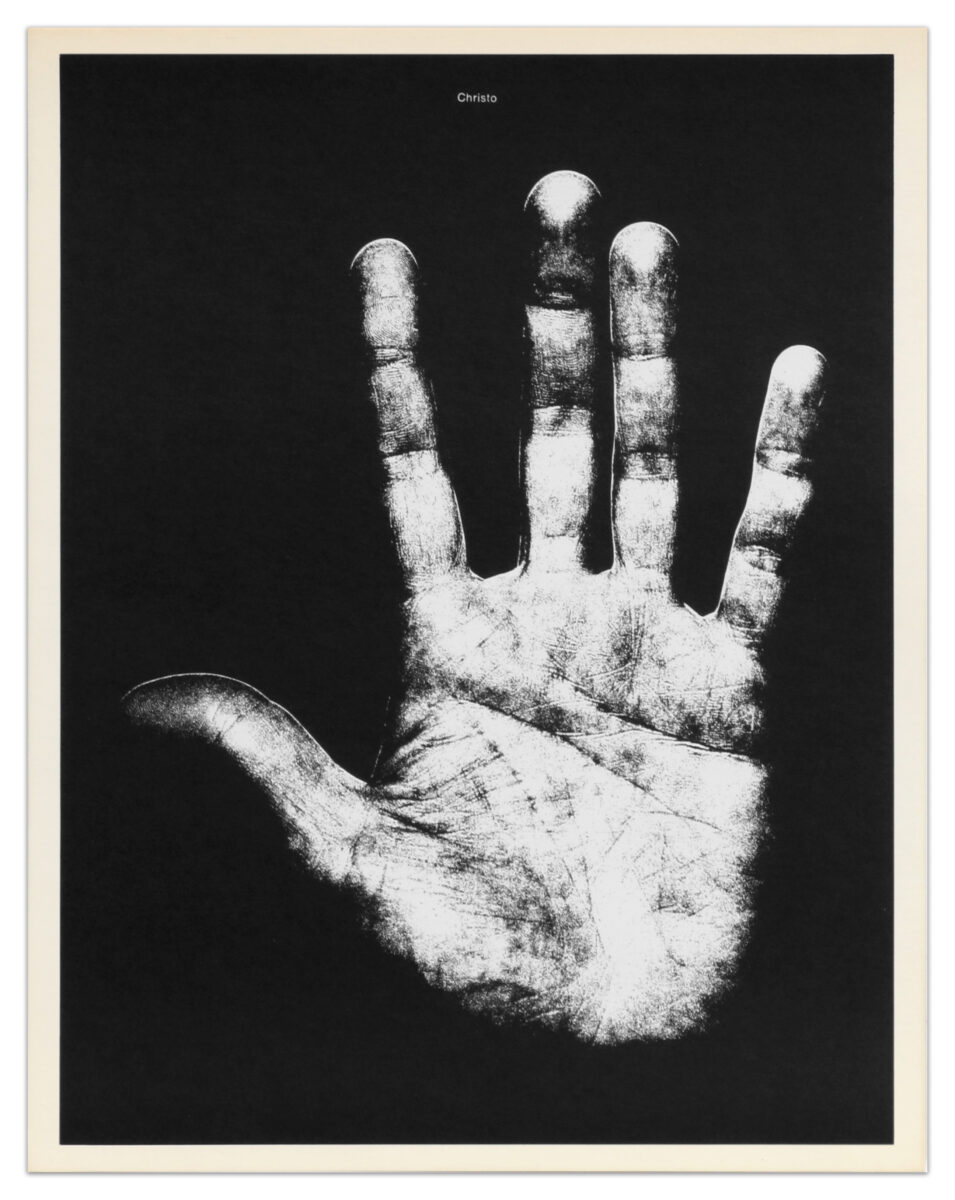
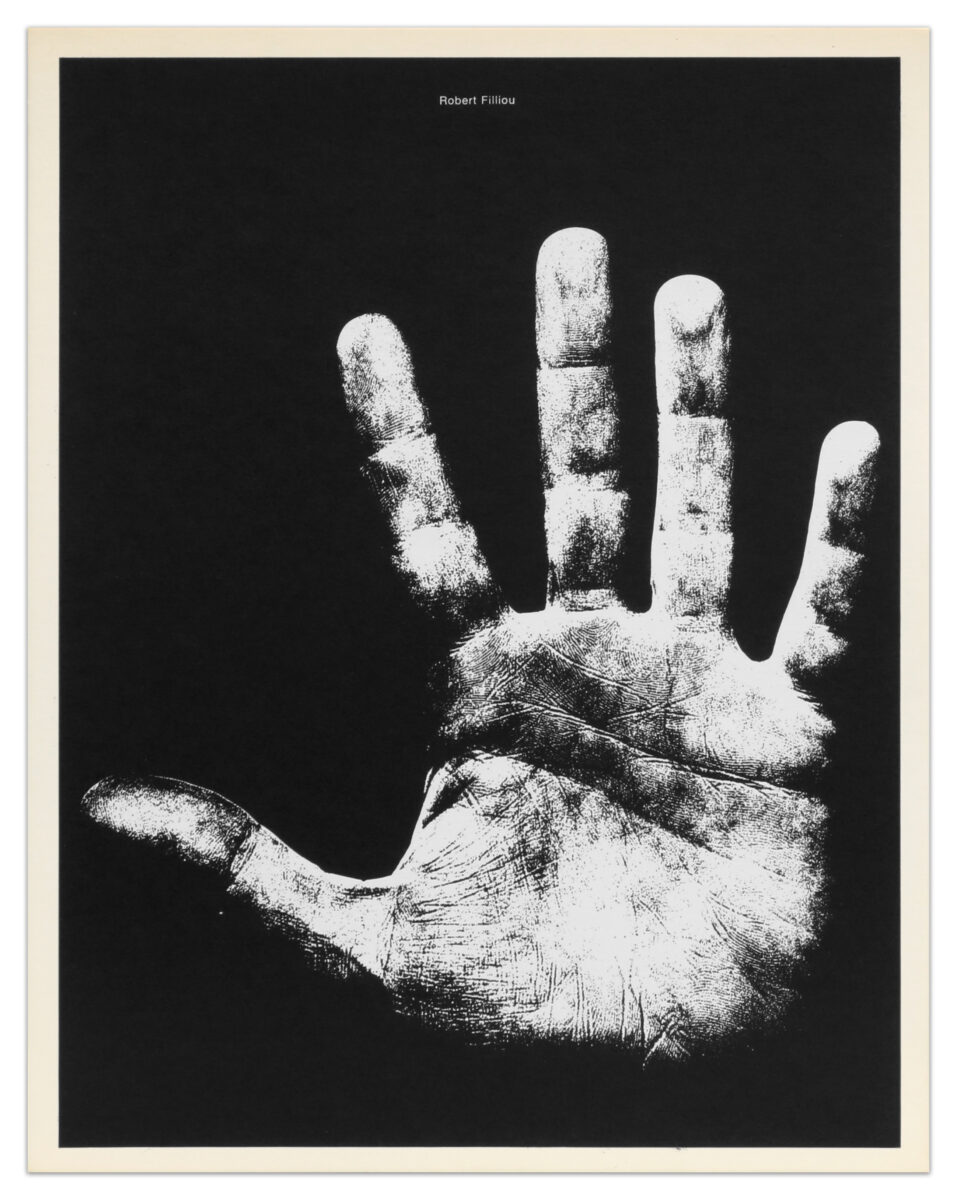
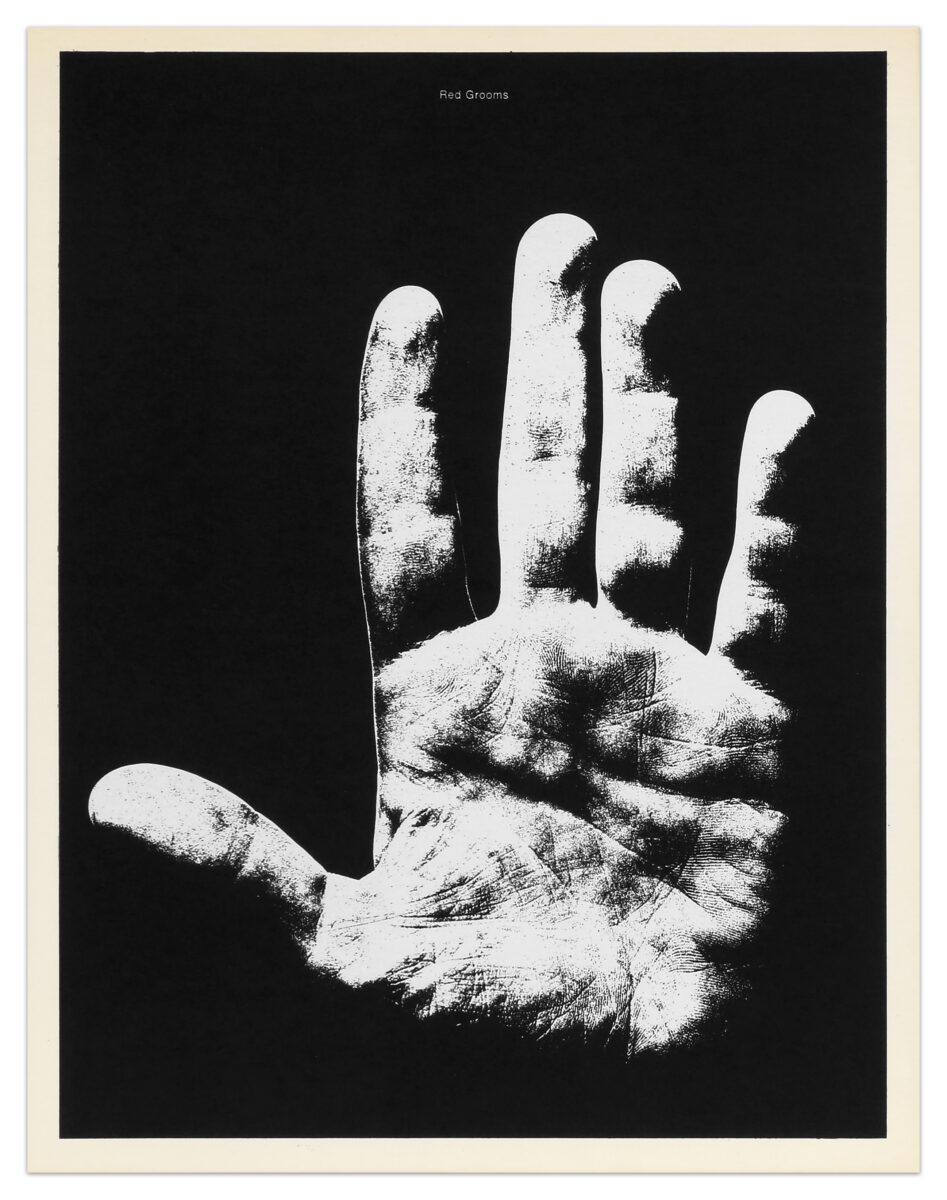
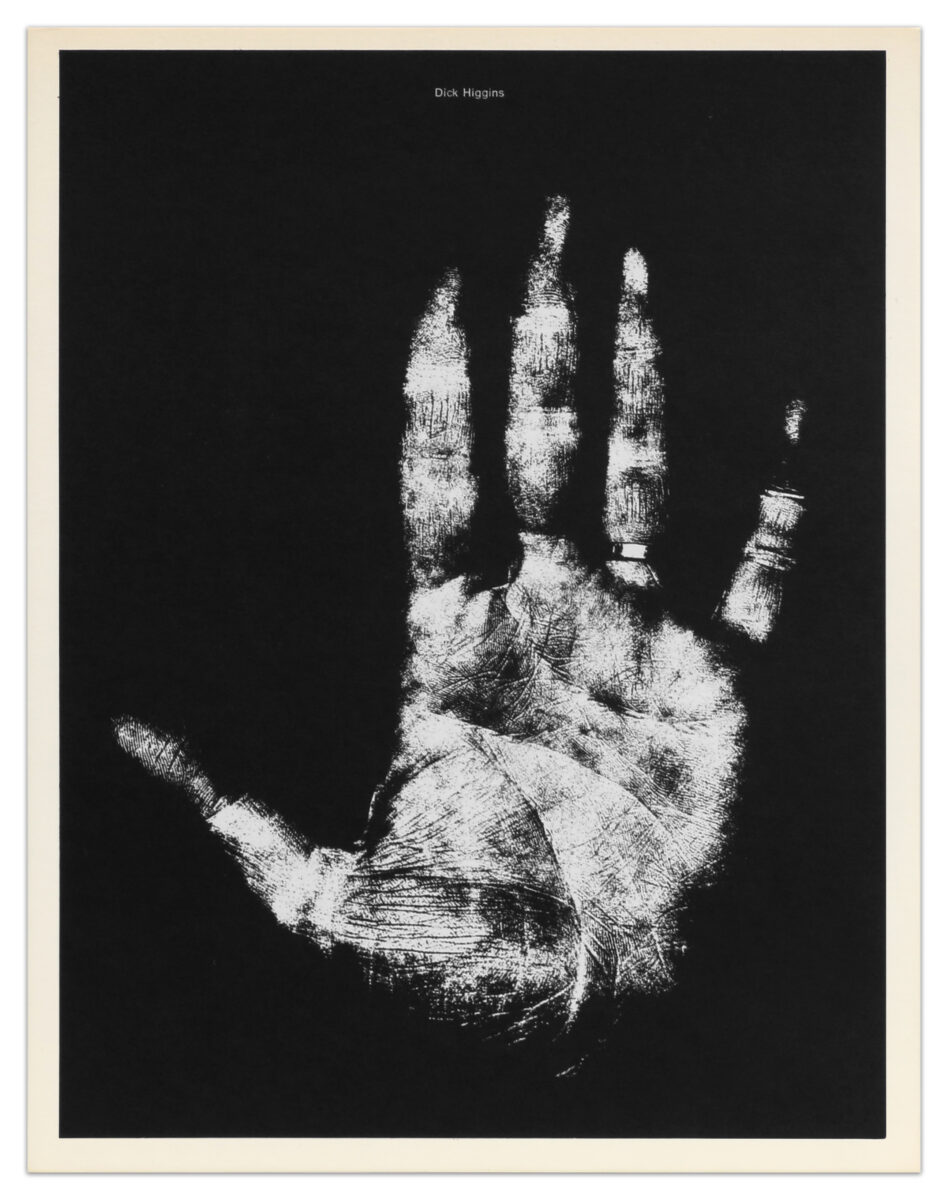
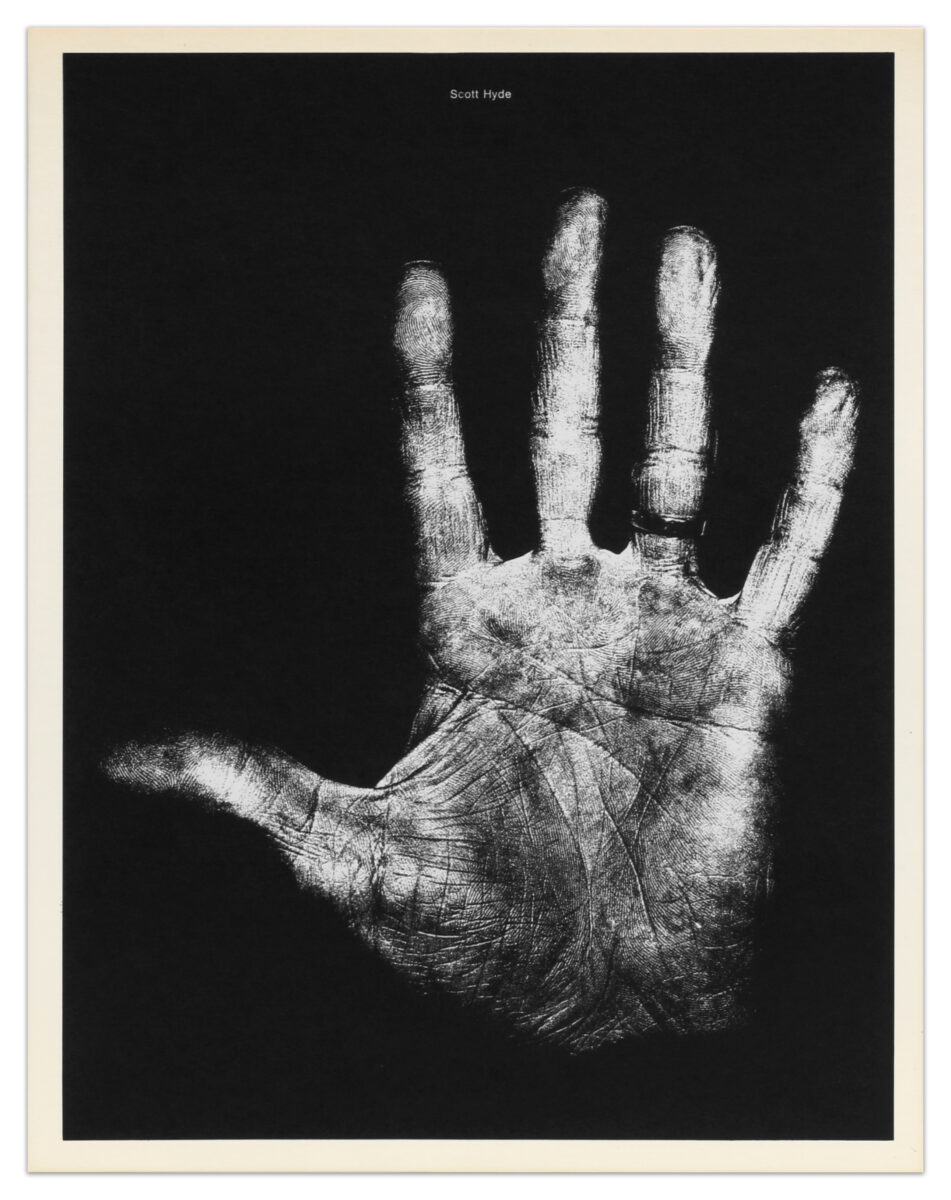
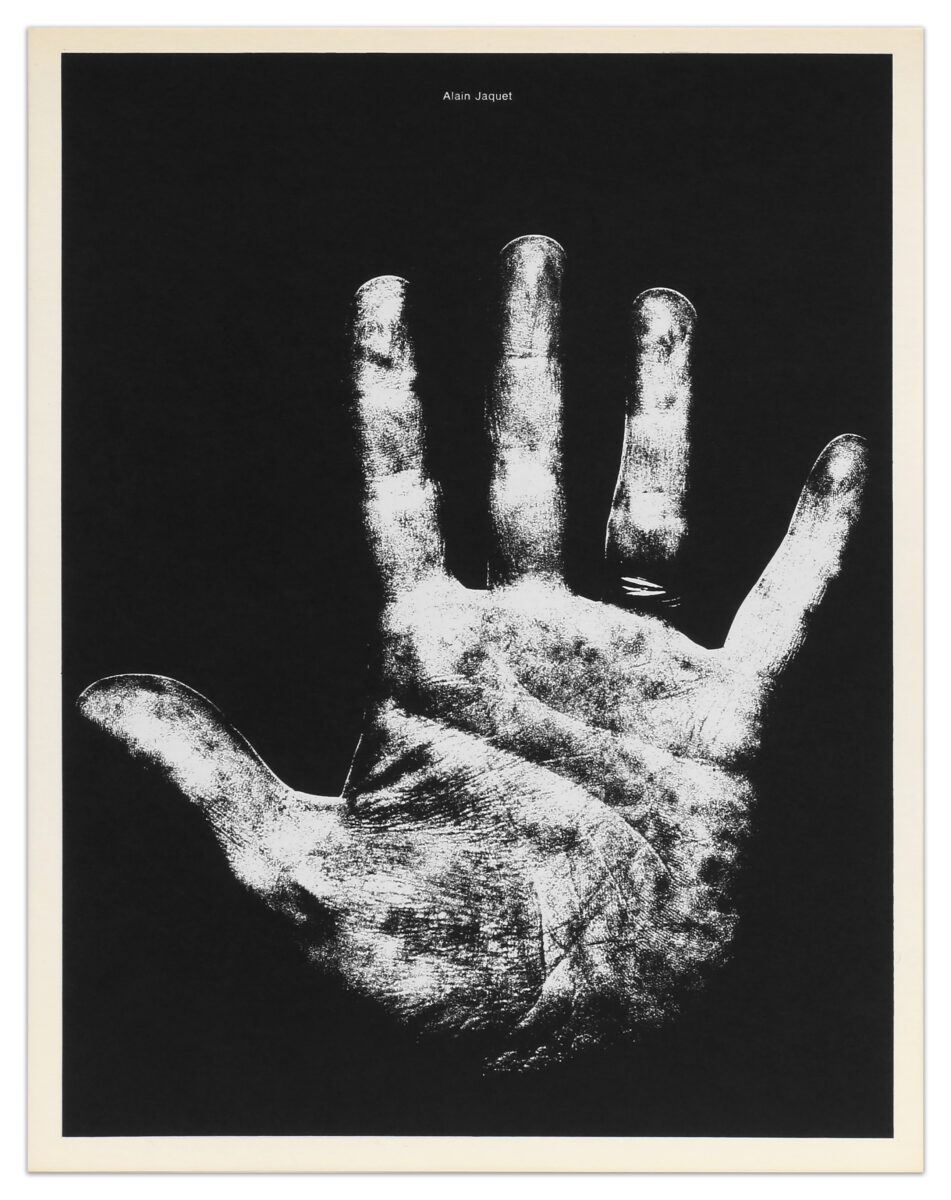
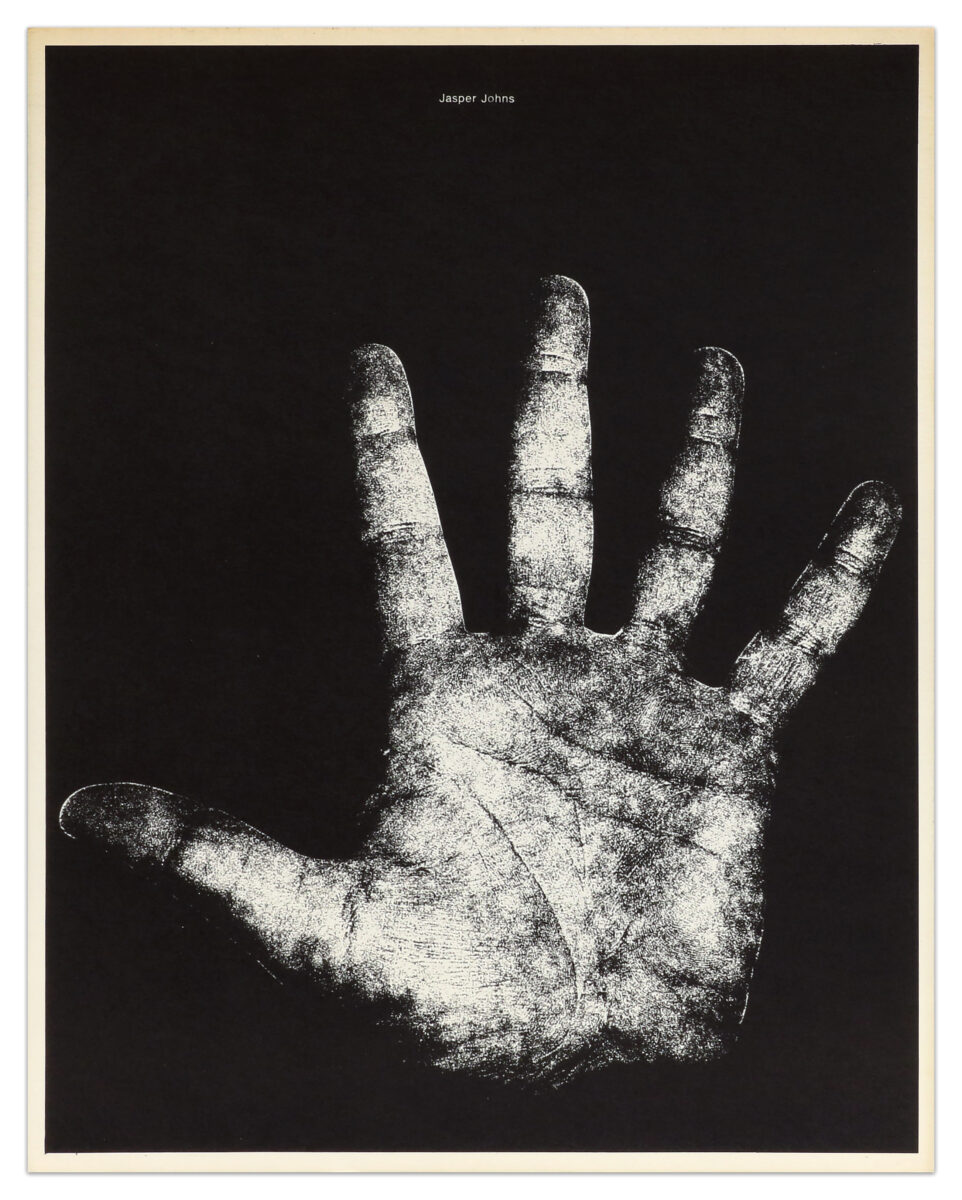
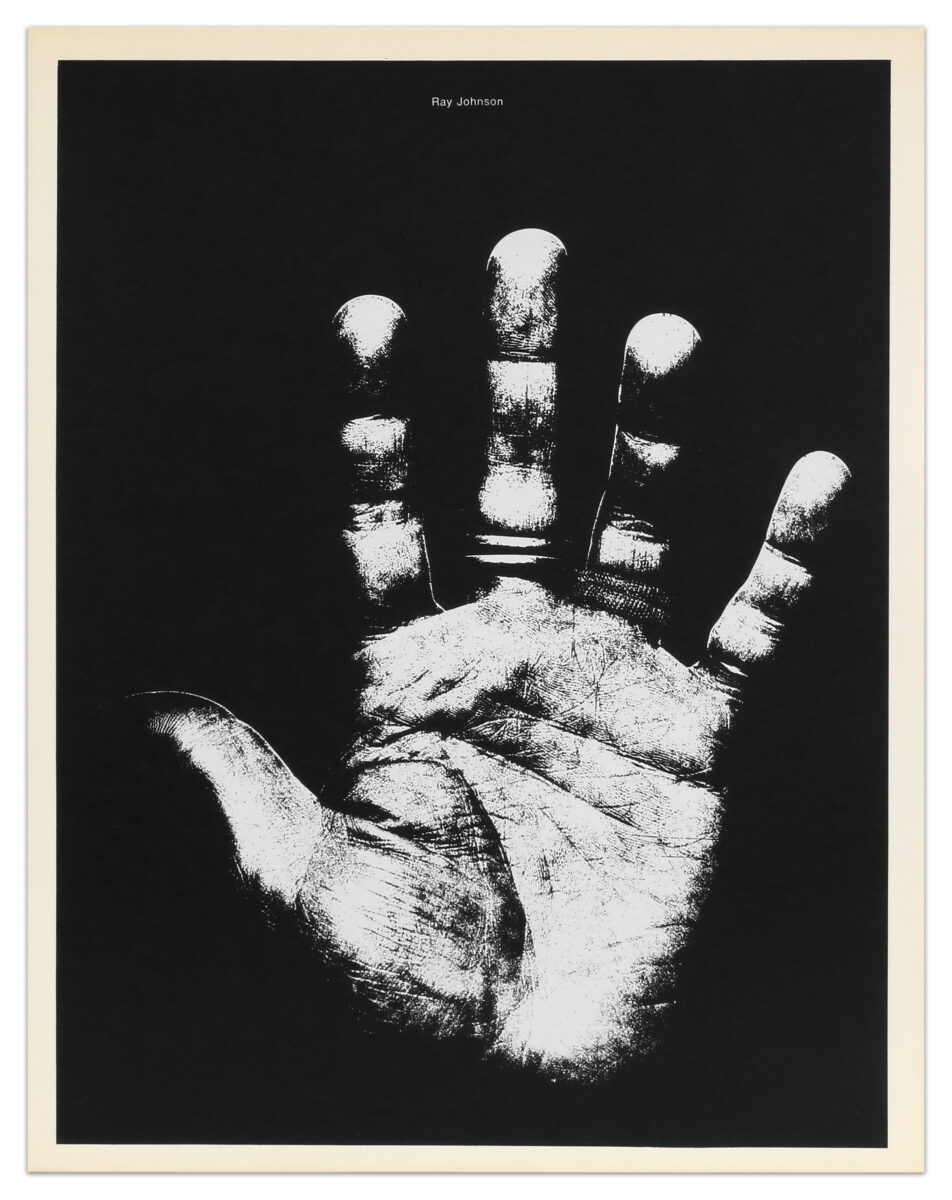
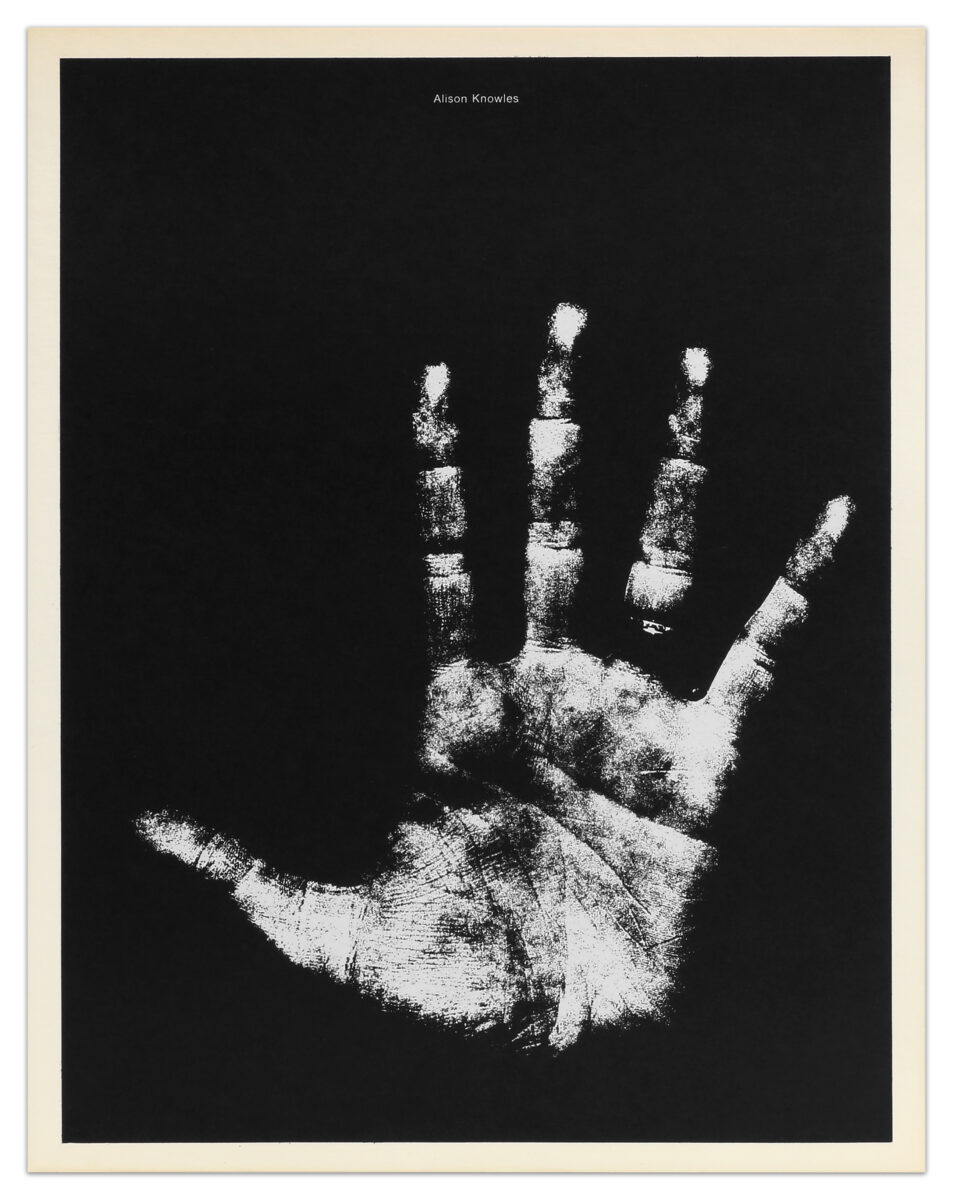

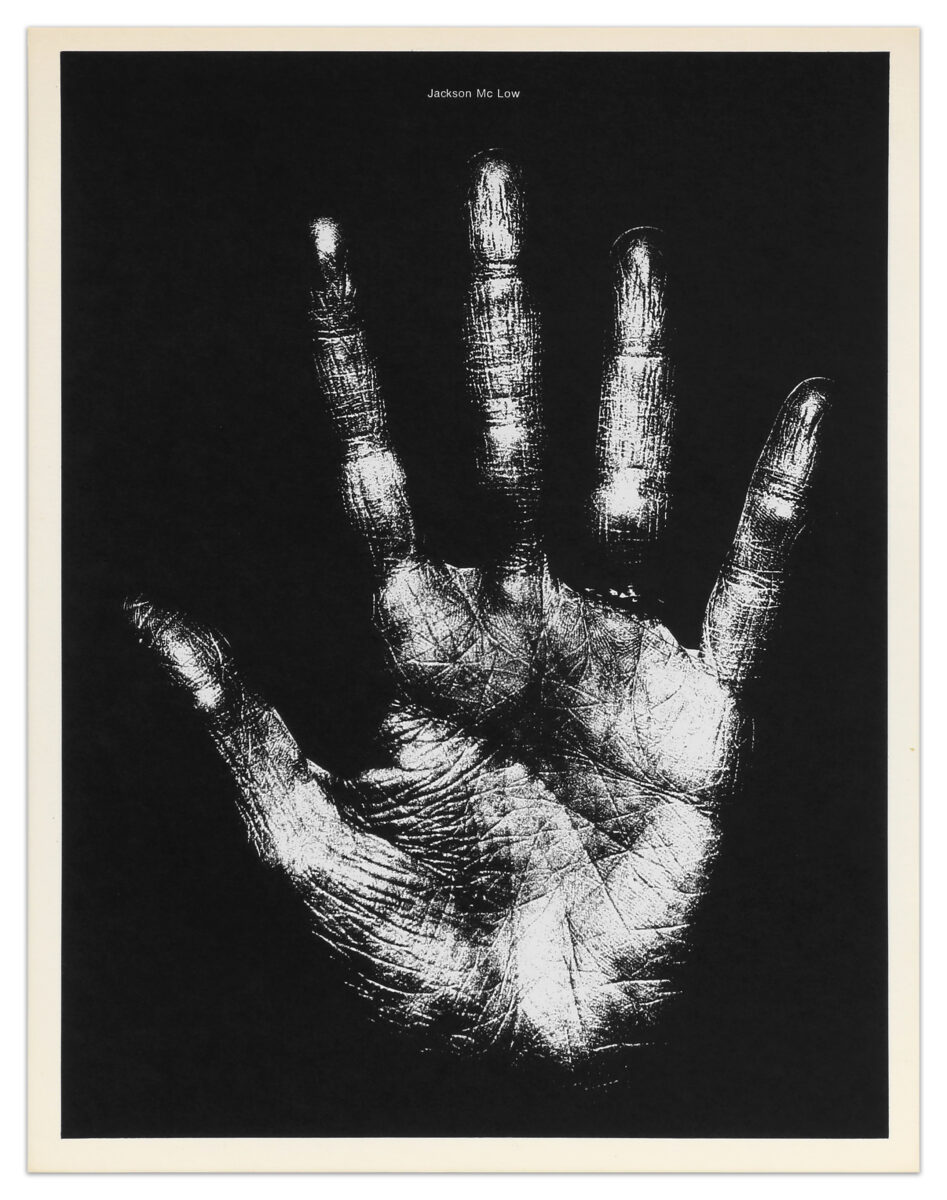


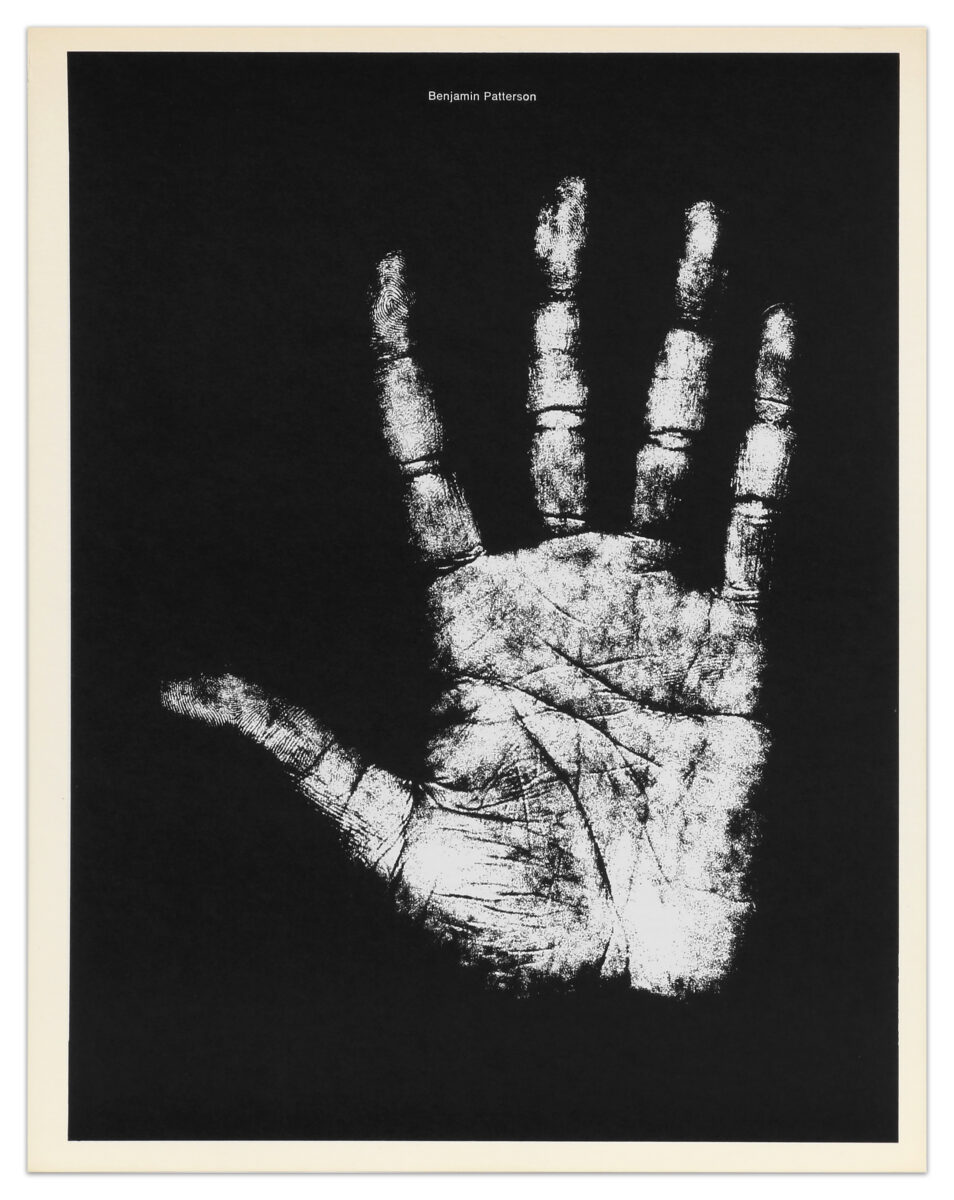
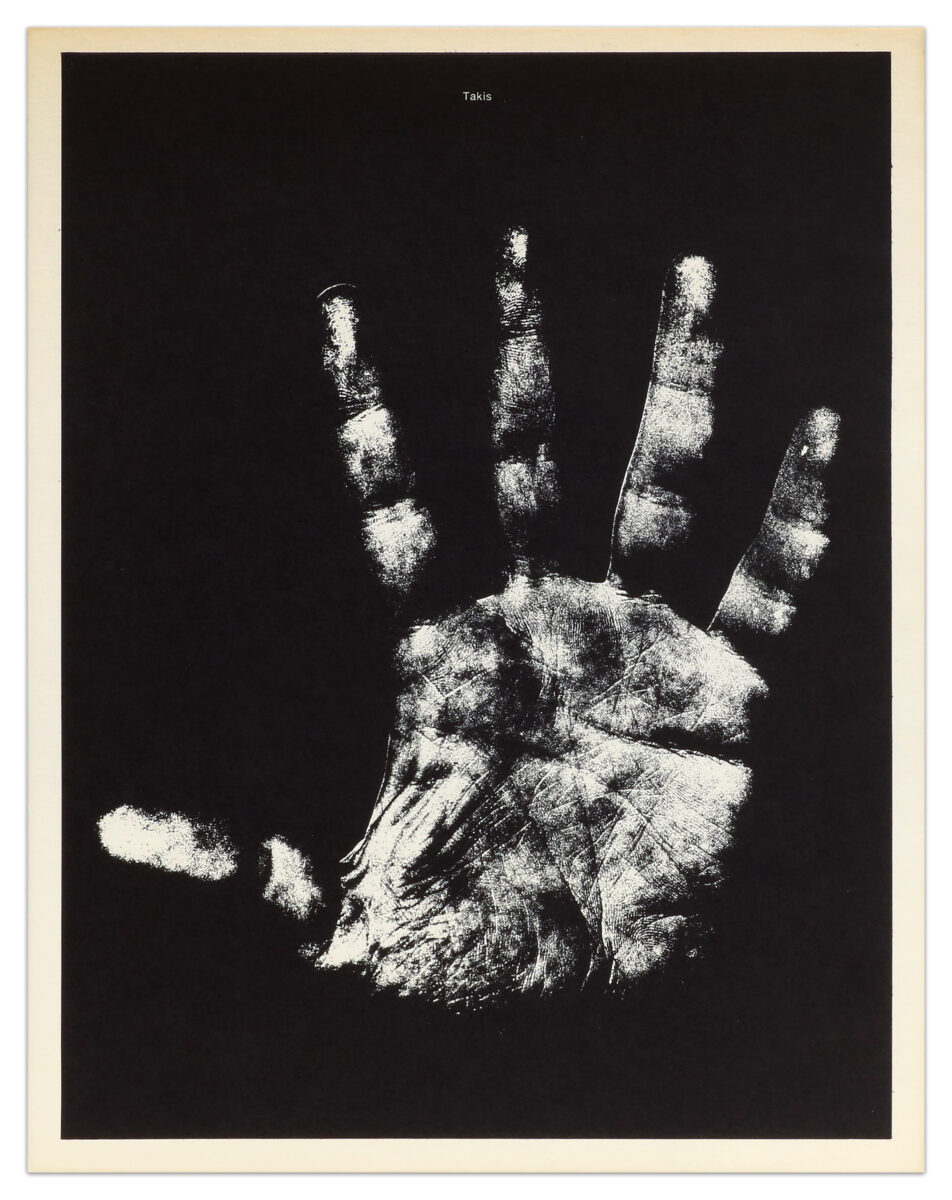
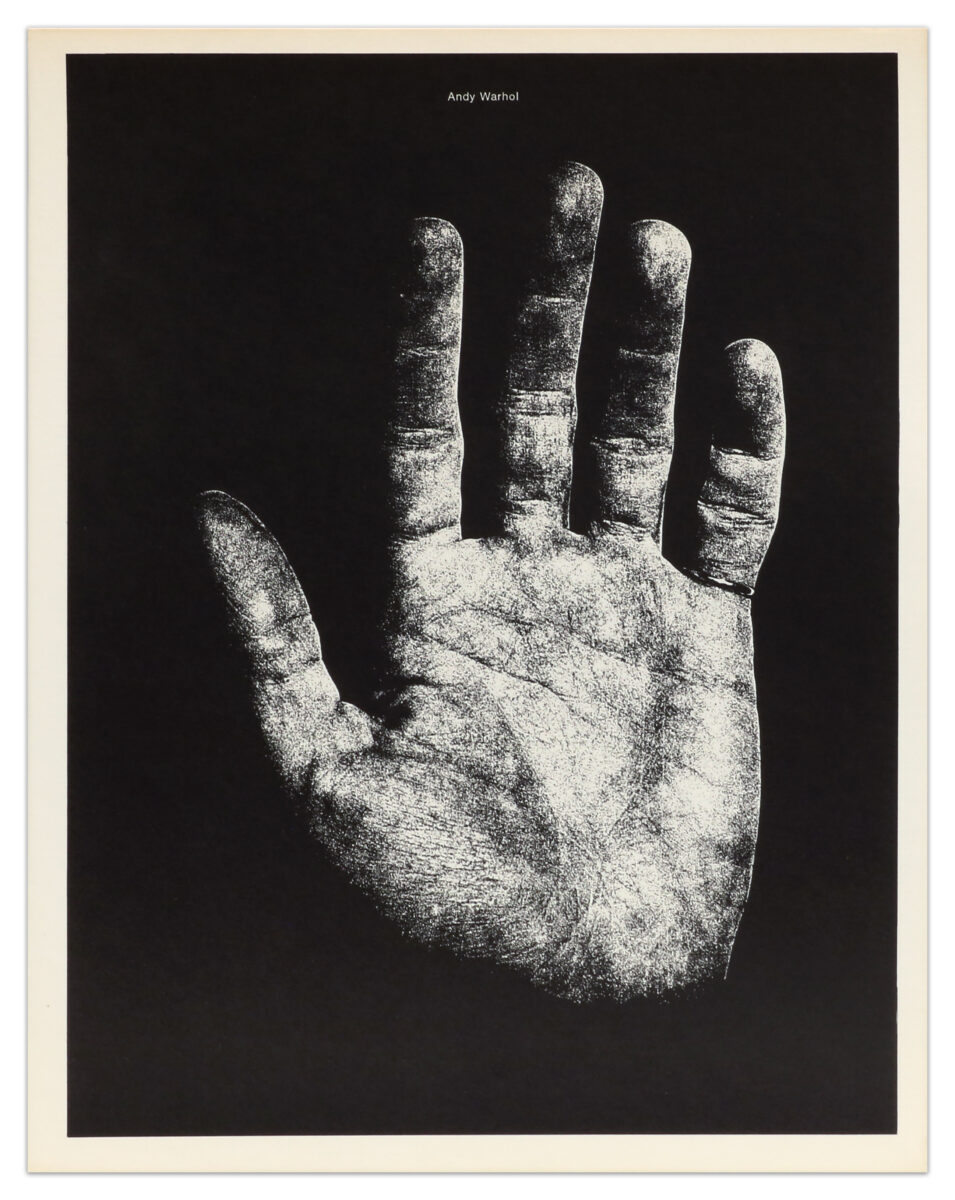
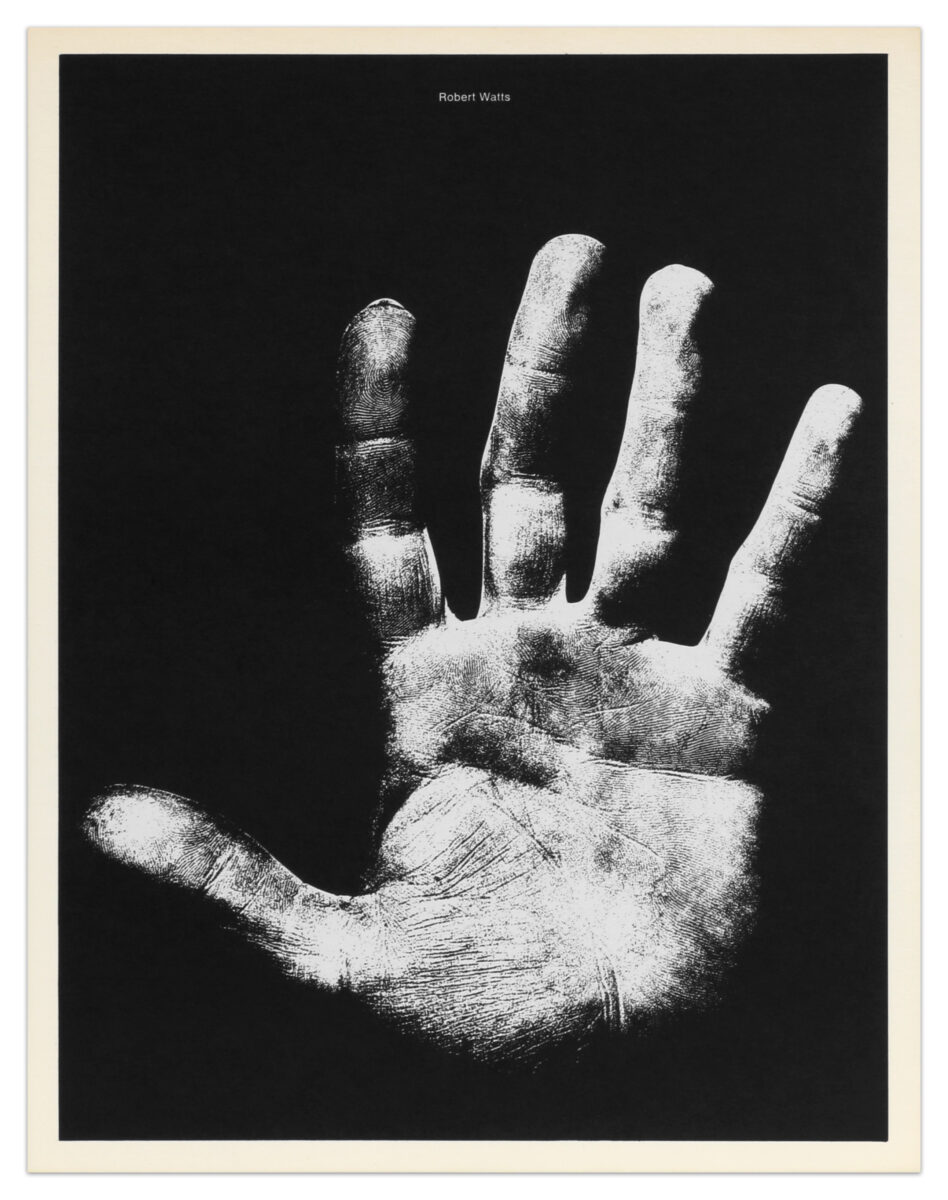
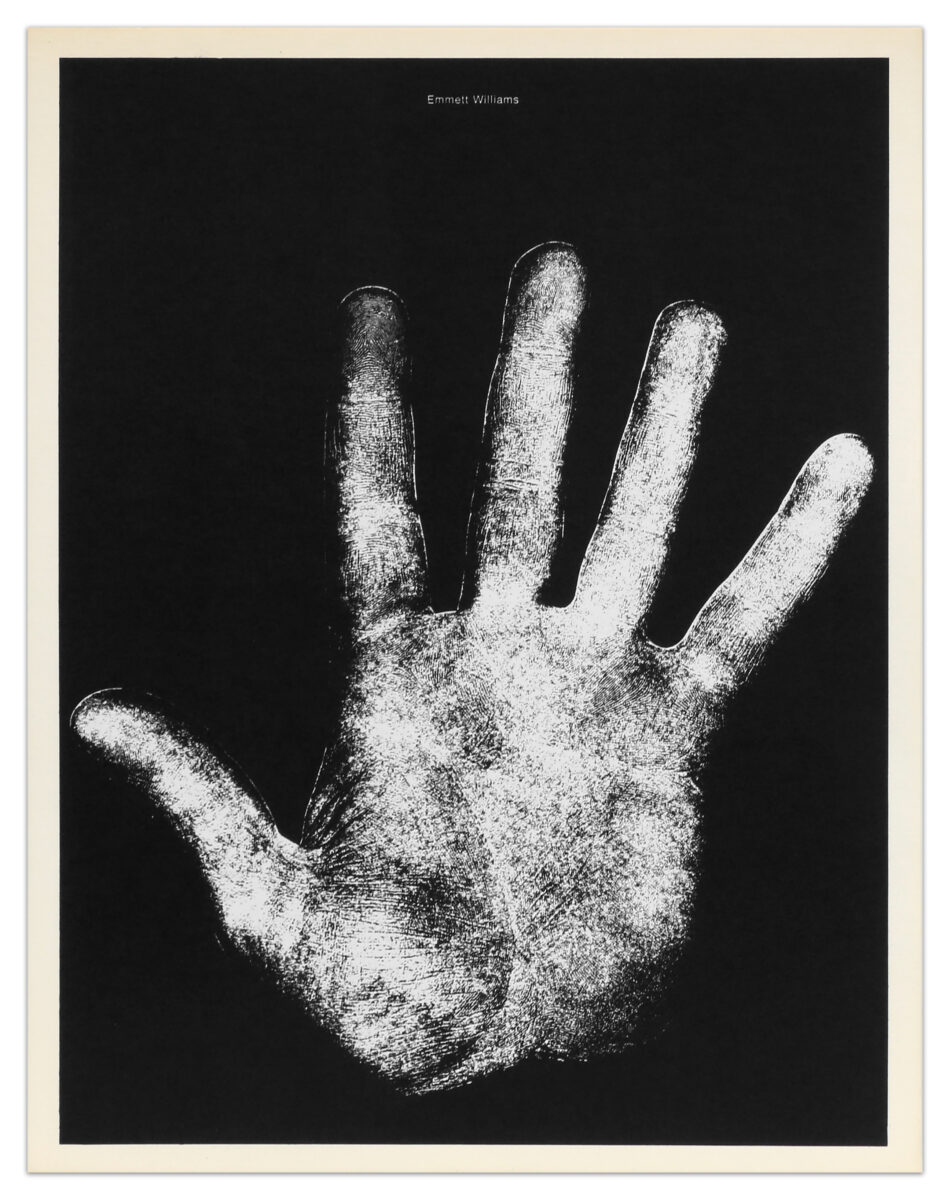
Edition of 150
Image size (each): 10 1/2 x 8 1/4 inches (26.7 x 21 cm)
Paper size (each): 11 x 8 1/2 inches (27.9 x 21.6 cm)
Frame size (each): 15 x 12 1/2 inches (38.1 x 31.8 cm)
Signed and numbered on inside of cover sheet
(Inventory #34573)
Edition of 150
Image size (each): 10 1/2 x 8 1/4 inches (26.7 x 21 cm)
Paper size (each): 11 x 8 1/2 inches (27.9 x 21.6 cm)
Frame size (each): 15 x 12 1/2 inches (38.1 x 31.8 cm)
Signed and numbered on inside of cover sheet
(Inventory #34573)
“The Key to Art (?)
It has occurred to me that the key to art may well consist of learning the significance or meaning of each part, line, marking, and shape of the artist’s hands. As a group, artists have many things in common distinguishing them from other groups (the military, for example). However, if you observe individual artists’ hands, you will soon see vast differences. You will notice that some are large, some small, also that some are stiff, others supple. Proceeding carefully with interpretations, finding an indication here, another there, you may form your own judgment about their art without intermediary interpretation by critics. With this in mind, Scott Hyde, the photographer, and I have asked and obtained the collaboration of 22 American and foreign artists. The photographed hands are of: Arman, Ayo, Robert Breer, Mark Brusse, Pol Bury, John Cage, Christo, Jasper Johns, Dick Higgins, Red Grooms, Alain Jacquet, Ray Johnson, Alison Knowles, Roy Lichtenstein, Jackson MacLow, Marisol, Claes Oldenburg, Benjamin Patterson, Takis, Andy Warhol, Robert Watts, Emmet Williams. Our own hands are included, for a total series of 24.”
—Robert Filliou
Filliou (Paris, 1926 – 1987) was an artist associated with Fluxus and produced works in all manner of media over a 40 year period. As explained in his quote above, Filliou made “Hand Show” in collaboration with the photographer Scott Hyde. The series consists of 24 images of the hands of 24 willing artists with the artist’s name printed above the accompanying hand. Among those who participated was Andy Warhol who, in turn, arranged for the project to be first shown, not at a gallery, but at a luxury store, where the artists’ hands would be in the display windows of Tiffany’s on Fifth Avenue, New York City.
Filliou, with Hyde, questioned the value of individuality, fame, and talent. He presented an artist’s identity as a hand, the “tool” most often associated with making art. Without the attached name, while each hand is different, none are famous, seemingly more talented, nor different than the hand of anyone else. A trained political scientist, Filliou was greatly inspired by the work of the feminist and utopian communist philosopher, Charles Fourier, especially his concept of ‘attractive passions’ that championed the concept of work as pleasure. Play and joy occupied crucial roles for Filliou, who believed art-making was part of an ongoing, permanent, and universal process intrinsic to everyday life.
10 Newbury Street, Boston, Massachusetts 02116
617-262-4490 | info@krakowwitkingallery.com
The gallery is free and open to the public Tuesday – Saturday, 10am – 5:30pm